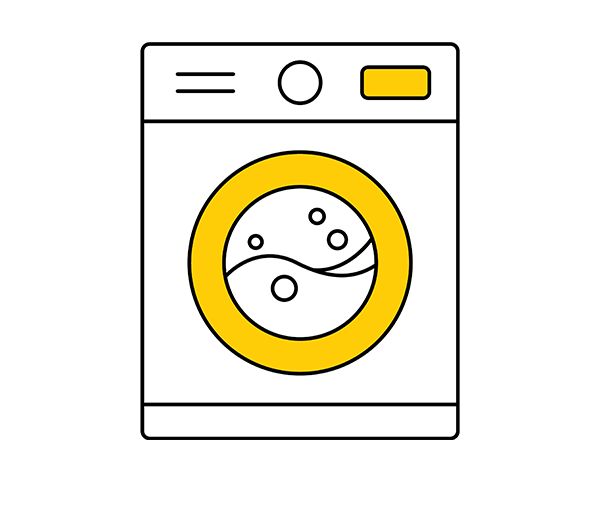Face masks are a way we can protect ourselves and others. Find out when you must wear them, how to wear them safely, who is exempt, and how to get free face masks.
Face masks help prevent the spread of COVID-19 in 2 ways.
They reduce the number of virus particles someone with COVID-19 can spread.
- They prevent you from inhaling virus particles.
- The best protection is when everyone wears a face mask.
How to wear a face mask safely
Free face masks
You can get free medical face masks when you pick up rapid antigen tests (RATs) from a testing centre. You do not need to be unwell or have COVID-19 symptoms. To get free face masks, order online:
Request free RATs and face masks | Ministry of Health
Find a testing site that offers free face masks | Healthpoint
If you are at higher risk of severe illness, you can get free P2/N95 face masks.
People at higher risk of severe illness from COVID-19
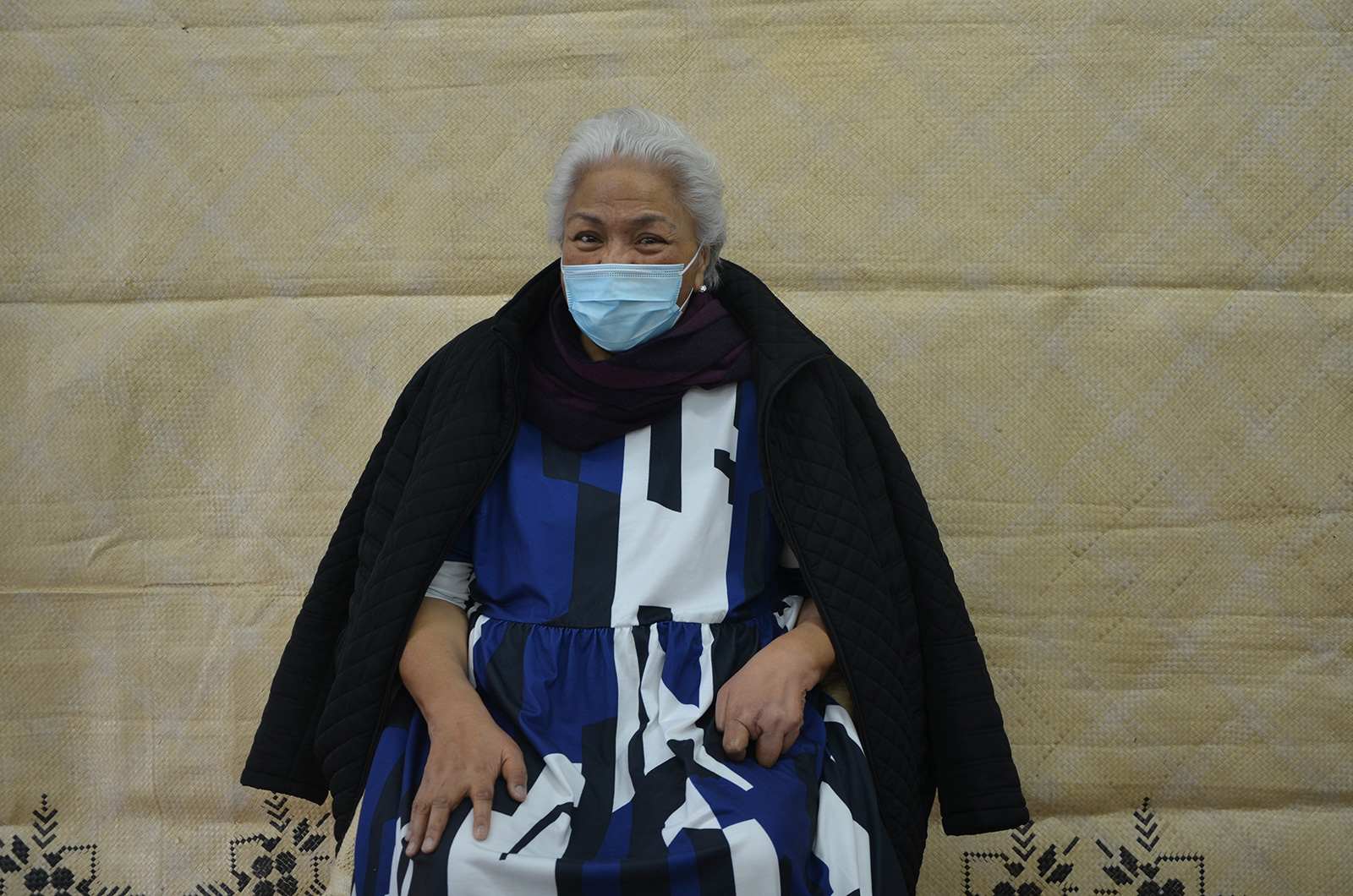
Face masks are a way we can protect ourselves and others. You must wear one when visiting healthcare services. If you cannot wear a face mask you can get a Mask Exemption Pass.
Latest update — 13 September
The traffic lights ended on Monday 12 September. The information on this page has been updated.
- You must wear a face mask at most healthcare services.
- We encourage you to wear a face mask in crowded places, such as public transport, or when visiting people at high risk.
- Your face mask must attach to your face by loops around your ears or head.
- If you are unable to wear a face mask, you can apply for a Mask Exemption Pass.
- You can get free face masks when you pick up RATs from a testing centre. P2/N95 face masks will be available for people at higher risk of severe illness.
You must wear a face mask at most healthcare services.
For example, you must wear a face mask when visiting:
- doctors' clinics
- community and iwi health providers
- pharmacies — but not those inside supermarkets
- hospitals
- urgent care services, such as after-hours clinics
- dentists and oral health services
- disability support services
- residential care for older people and people with disabilities
- other health services such as optometrists and physiotherapists.
For patients and workers at healthcare services, face mask requirements will be decided locally. The Ministry of Health has information for staff about using personal protective equipment (PPE) such as face masks.
Infection prevention and control for health and disability workers | Ministry of Health
Exemptions
You do not need to wear a face mask if:
- you live at a residential care service
- you visit psychotherapy, counselling, or mental health and addiction services.
We strongly recommend patients at any healthcare service wear a face mask if they can.
Some healthcare services may ask you to wear a face mask whatever your reason for being there.
We encourage you to wear a face mask:
- if you are a Household Contact and are testing daily for 5 days
- if you are at higher risk of getting seriously ill from COVID-19
- on public transport, including buses, commuter trains, indoors on ferries and flights
- if you want to reduce your risk of becoming sick
- in crowded places
- in enclosed spaces with poor ventilation
- in close contact settings, such as face-to-face conversations.
Some places, such as workplaces, special events or marae, may still ask you to wear a face mask.
Face masks remain an important defence against COVID-19. The government will regularly review their use.
You can get free medical face masks when you pick up rapid antigen tests (RATs) from a testing centre. You do not need to be unwell or have COVID-19 symptoms. To get free face masks, order online:
Request free RATs and face masks | Ministry of Health
Find a testing site that offers free face masks | Healthpoint
If you are at higher risk of severe illness, you can get free P2/N95 face masks.
Face masks are unsuitable for some people due to disabilities or health conditions.
If you cannot wear a face mask, you can apply for a Mask Exemption Pass. It can help make it easier to explain that a face mask is unsuitable for you.
You do not have to show a Mask Exemption Pass — but it may help you feel more comfortable.
Apply for a Mask Exemption Pass
Advice if you cannot wear a face mask
Sometimes the reason why a face mask is unsuitable for you is not obvious to others. Do not worry if someone asks whether you can wear a face mask. They just want to help keep you and others safe.
It is inappropriate for someone to ask about your disability or condition. But it is reasonable for them to check whether you are exempt from the rule to wear a face mask.
If you cannot wear a face mask, these healthy habits will help keep you and others safe:
- Stay home if you are sick.
- Keep a 2-metre distance from people you do not know.
- Regularly wash and thoroughly dry your hands often.
- Cough and sneeze into your elbow.
You can also consider if there are delivery or click-and-collect options you could use. Or ask family and friends to pick things up for you.
Different types of face masks offer different protection. Make sure your face mask is well-fitting with no gaps and used correctly and consistently. This will help to protect you and others from COVID-19.
Wearing a face mask helps keep you and others safe. They are particularly useful when physical distancing is not possible.
To be effective, a face mask should:
- go over your nose, mouth and chin
- be well-fitting so there are no gaps above, below or on the sides
- be used correctly and consistently
- not be damp, damaged or dirty.
A face mask that is not fitted correctly may become ineffective. It may not offer enough protection for you or those around you against COVID-19 spreading.
Different types of face masks can provide different levels of protection, depending on the type of mask and how they are used. You should find a face mask that best fits you.
There are several things you should think about when choosing a face mask for you. This includes:
- your risk of illness from COVID-19
- how well the face mask fits you
- layers and the filtration ability of the material
- comfort of the face mask.
Whatever face mask you choose, remember any face mask is better than no face mask.
You can use a fabric face mask. The effectiveness of fabric face masks can vary depending on the style and materials used.
You should look for reusable fabric face masks that have at least 3 layers and are made of tightly woven fabric, such as cotton.
Ideally face masks should also use 2 different types of fabric that still allow easy breathing but provide filtration and a good fit. Face masks with more than one layer will help contain any respiratory droplets.
You can increase protection of your fabric face mask by adding a ‘filter layer’ and a nose bridge wire to mould the face mask to your face. A filter layer could be a specific face mask filter or a cut-down disposable face mask to add to a face mask pocket.
Fabric face masks can still be effective for short periods of time in well-ventilated areas.
Cleaning your fabric face mask
Taking care of your face mask is important. You should wash fabric face masks daily using soap and hot water, and completely dry them before using again.
You should have enough face masks to at least wash one and wear one. Check for wear and tear to make sure there are no holes and they are still in good condition.
Many stores and online retailers offer these types of face masks. You can also make your own but make sure it has at least 3 layers.
Disposable face masks with ear loops can offer better protection for a longer period than fabric face masks. Especially when you are in a higher-risk indoor setting.
These are the widely available ‘blue’ medical masks. They are often called ‘medical’, ‘surgical’ and ‘procedural’ masks.
For use in healthcare, they must comply to a certain standard. Many surgical masks may not be certified to medical standards, but still provide effective protection.
You can find these at many retail stores, supermarkets or pharmacies. Some relevant social services agencies or organisations may also be able to provide some.
Getting a better fit
To make these masks fit better and get a snug fit:
- pinch the nose wire
- try layering them with a fabric mask over top
- knot the ear loops where they attach to the mask, then fold and tuck excess material under the edges
- try pulling the ear loops back and securing them with a hair tie or clip.
How to wear a face mask safely
Try to avoid twisting the ear loop into a figure 8, as this will likely cause a side gap that could let virus particles in.
Double masking or layering can provide greater protection. The other layer, preferably a fabric mask, can help stop any leaks around the top and sides of the bottom mask.
Reusing a surgical face mask
To reuse these masks, you can soak them in warm, hot or boiling water for a few minutes and hang them out to dry. You can do this up to 10 times.
When they start to show wear or no longer have a good fit, dispose of them in your general household rubbish bin.
Disposable high-filtration face masks or particulate respirators offer the highest level of protection when used correctly.
For people who are at greater risk of severe illness from COVID-19, the use of a P2/N95 face mask may be a better choice for you.
If you choose to wear this type of face mask, it is important to follow the manufacturer's instructions on how to mold these face masks to your face. You need to make sure there are no gaps and you have a tight seal against your face.
These face masks can offer hours of protection when in high-risk indoor settings where there is no or little ventilation. But they need to have a very tight seal around the face to provide better protection than a well-fitting medical mask.
In healthcare settings, these face masks work best when a person is ‘fit tested’ to make sure they have the right type of face mask that suits their face.
Do not wash these face masks. These face masks have a special static charge that traps viruses. You can reuse these face masks several times if you leave them for a few days between each use in a cool, dry place. If they no longer provide a tight seal around your face, or are dirty or damaged, then you should dispose of them in your general household rubbish bin.
Different standards
Particulate respirator face masks come in a variety of models, prices, availability and suitability. They are often identified by which international regulatory standard they meet.
- P2 is the Australia/New Zealand respiratory standard.
- N95 is the United States respiratory standard.
- KN95 is the Chinese respiratory standard.
- FFP2 is the European respiratory standard.
Choose a face mask for children that fits them best, is comfortable to wear and can be worn consistently. The face mask should cover their nose, mouth, and chin without gaps above, below or on the sides.
This can be a reusable fabric mask with 3 layers or a medical disposable mask. Many fabric masks (either purchased or made) come in child sizes.
For commonly available medical masks, you can use the knot and tuck technique to improve the fit to a child's face.
These types of face masks or coverings provide very little protection against transmission of COVID-19.
- A face shield is not recommended to be worn instead of a face mask as it will provide very little protection against droplets or aerosol spray.
- Dust masks or particulate respirators that have a 1-way valve are not recommended as they can allow particles from you to spread to others.
- Masks that are showing wear and tear. If there is any thinning of the material, holes, or the ties or elastic loops can no longer keep the mask in place, you should replace it.
- Scarves, bandannas, buffs or t-shirts are no longer acceptable as face coverings.
When you wear a face mask, it is important you use it safely. It should go over your nose, mouth and chin. It should be well-fitting so there are no gaps above, below or on the sides.
- Never share face masks with other people.
- Your face mask should go over your nose, mouth and chin. It should be well-fitting so there are no gaps above, below or on the sides.
- Do not re-use a face mask once it has become damp, damaged or dirty.
- For some people wearing a face mask is unsuitable. They still have the right to access food and services.
Clean your hands
Before you put on your face mask, clean and dry your hands. Use either:
- soap and water, or
- hand sanitiser that is at least 60% alcohol.
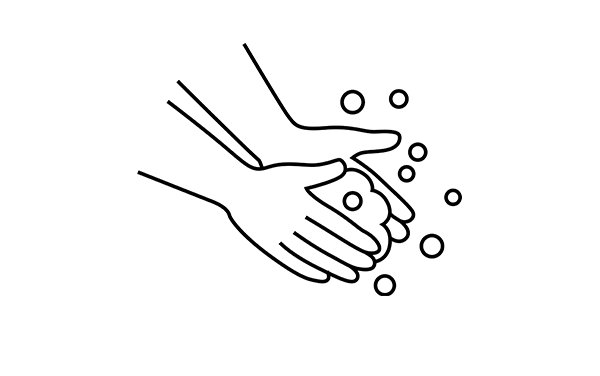
Check your face mask
Make sure it is:
- clean
- dry
- not damaged.

Put on your face mask
Place the face mask over your nose and mouth, then secure it with ties or ear loops. The face mask should:
- fully cover your nose, mouth and chin
- fit comfortably, but securely, against the side of your face
- allow you to breathe easily.
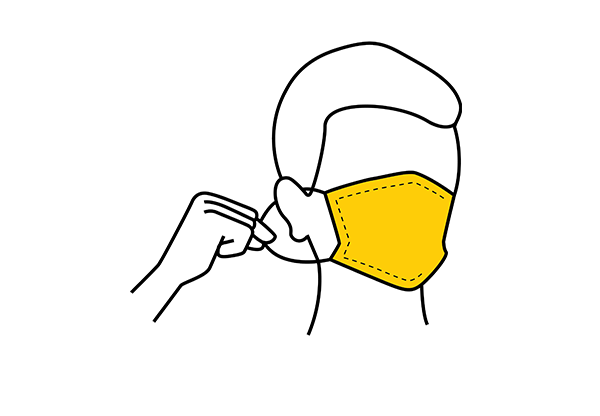
Clean your hands again
Use either:
- soap and water, or
- hand sanitiser that is at least 60% alcohol.

The effectiveness of a face mask can be improved by making sure your mask is tightly fitted to prevent any air gaps between the mask and your face.
Fold your mask in half
Clean or sanitise your hands first. Fold the mask top to bottom.
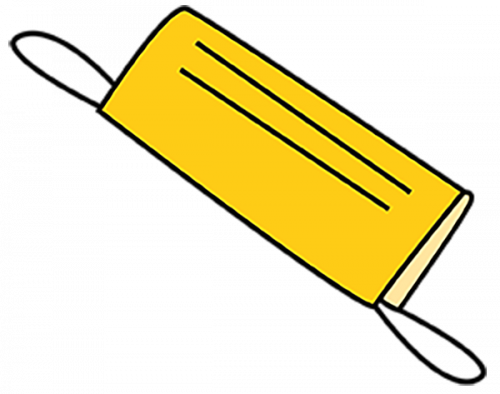
Tie knots in the ear loops
Tie a knot where the string attaches to the mask and pull tight.
Do this on both sides of the mask.

Fit the mask to your face
Place the face mask over your nose, mouth and chin.
Fit the mask comfortably, but securely, against the side of your face.
Make sure you mould the nose wire to your nose and there are no gaps at the sides.
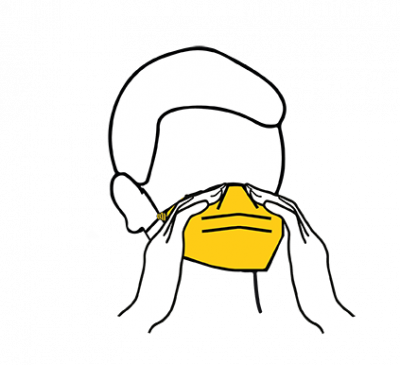
Avoid touching the front of your mask
If you touch your face or the front of your mask, thoroughly wash and dry your hands.
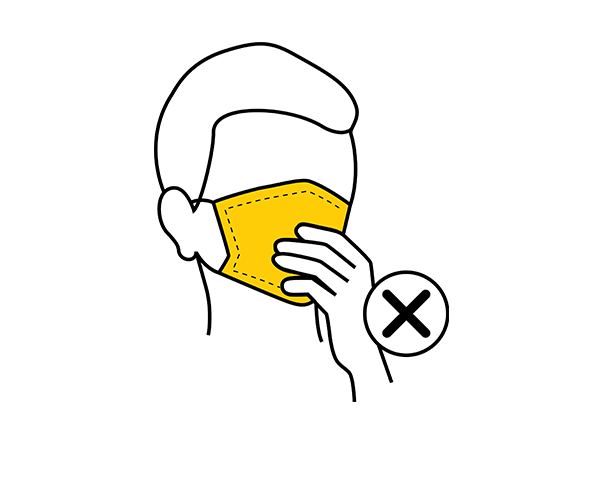
Avoid touching your face
If you touch your face or the front of your mask, thoroughly wash and dry your hands.

Avoid moving your mask
Do not pull your mask down below your chin.
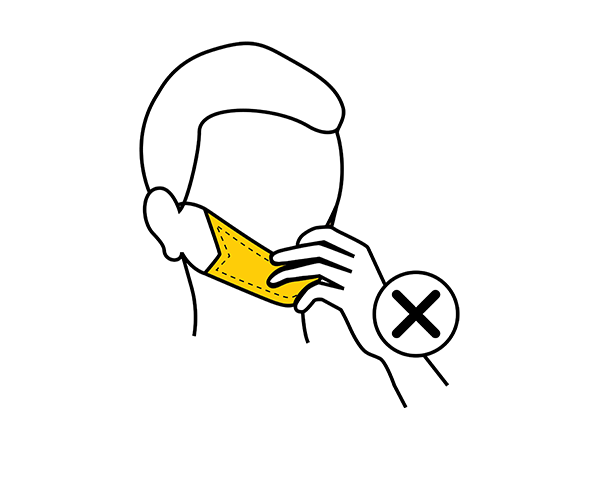
Clean your hands
Clean and dry your hands. Use either:
- soap and water, or
- hand sanitiser that is at least 60% alcohol.

Remove your face mask
Take your mask off from behind and pull it away from your face.
Use the loops or untie it.
Do not touch the front of the mask, and be careful not to touch your eyes, nose or mouth.
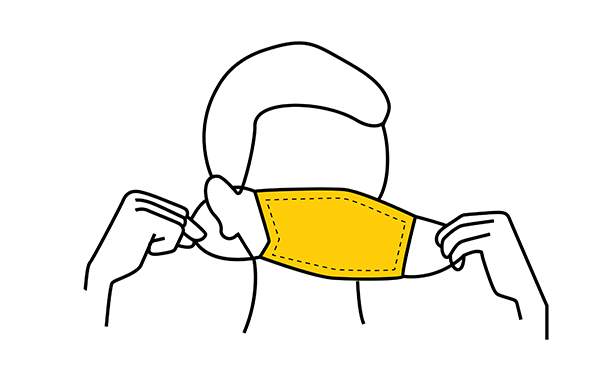
Clean or dispose of your mask
Clean your mask
Clean cloth masks by washing them with detergent in hot water. You can do it either by hand or in a washing machine.
Dry the mask completely before you use it again. Do not use a damp mask.
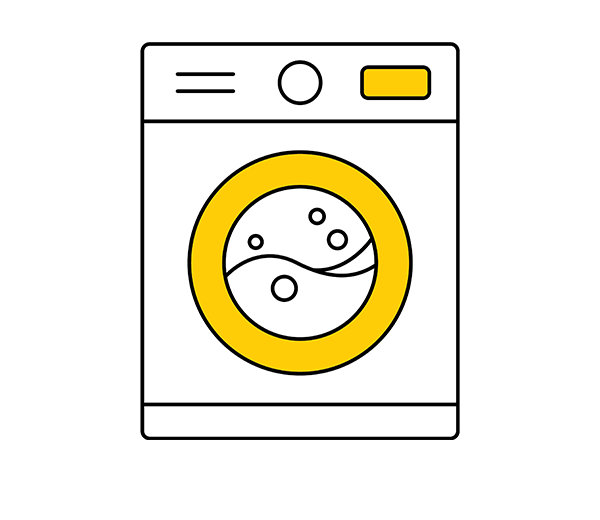
Dispose of single-use face masks
Dispose of used face masks in your general household rubbish bin. Do not put them in the recycling.
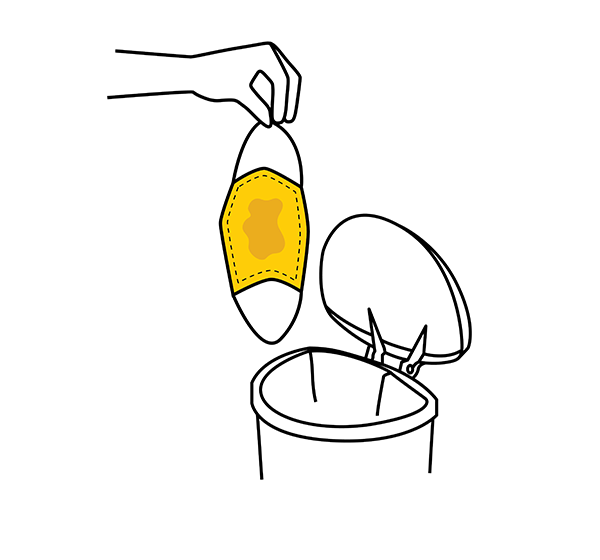
Clean your hands again
Use either:
- soap and water, or
- hand sanitiser that is at least 60% alcohol.
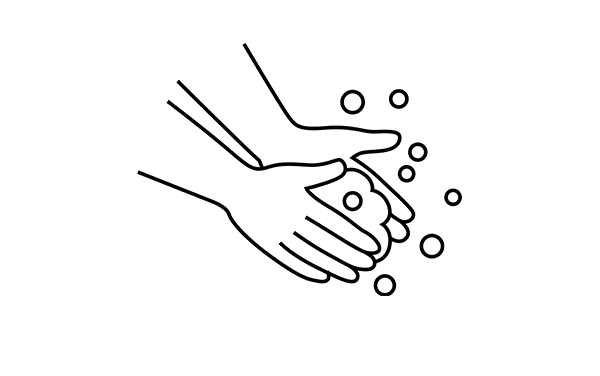
You can easily make a fabric face mask. It should have 3 layers, with 1 layer of moisture-resistant fabric. It should have loops around your ears or head.
- You can still make and wear fabric face masks.
- Fabric face masks should have at least 3 layers and are effective for short periods of time in well-ventilated areas.
- They must be attached to your head with loops around your ears or head — you cannot use scarves, bandannas or t-shirts that have been pulled up over your face.
- Your face mask should cover your nose, mouth and chin.
How to sew your own face mask
You will need
- Tightly woven cotton fabric, 39 x 19 cm
- Moisture-resistant fabric, 19.5 x 19 cm. You can use nylon or polypropylene, for example a running-short fabric.
- 2 x 20 cm pieces of elastic
- Measuring tape
- Scissors
- Pins
- Cotton thread
- Sewing machine
- Optional: Swap a cotton piece of fabric for a non-woven fabric like spunbond to enhance filtration, 19.5 x 19 cm
Steps to sew a face mask
Step 1: cut your cotton fabric for the inner and middle layers
Cut out 2 rectangles from your tightly woven cotton fabric, each measuring 19.5 cm x 19 cm. To enhance filtration of your face mask, you can swap the inner layer to use spunbond.
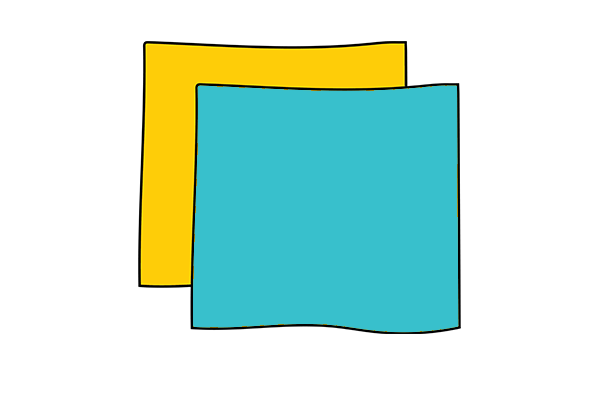
Step 2: cut out your outer layer
Cut out a rectangle from the moisture-resistant fabric for the outer layer, measuring 19.5 cm x 19 cm.
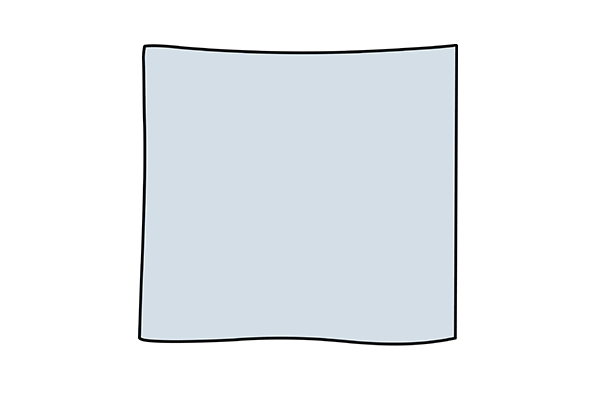
Step 3: cut your elastic
Cut 2 pieces of elastic, each measuring 20 cm long.
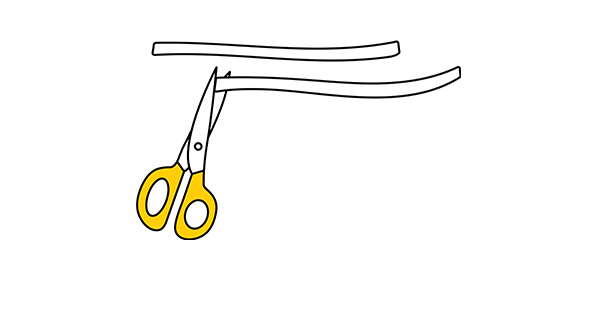
Step 4: pin your elastic
Take the outer piece of fabric, with the side you want facing outwards turned up.
Pin the ends of the elastic to the sides of your fabric. Make a semi-circle with your elastic so it does not catch when you sew it. Pin the elastic in place.
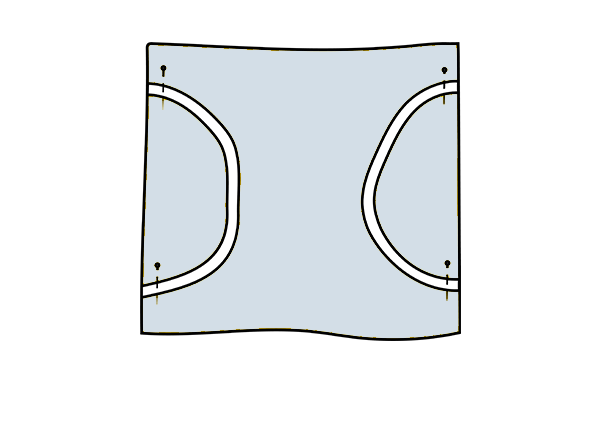
Step 5: lay your fabric together
Lay your pieces of fabric together (with the spunbond in the middle, if using). Make sure the moisture-resistant fabric that will be on the outside of your face mask is turned inwards here.
Pin all the pieces together.

Step 6: stitch your fabric together
Stitch your fabric together with a 6 mm seam allowance. Leave a small opening on one side.
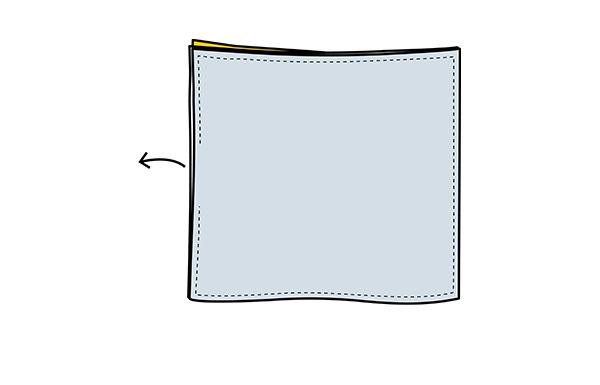
Step 7: turn right side out
Turn the fabric right side out and sew a 3 mm seam around the outside to close the opening and finish the edges neatly.
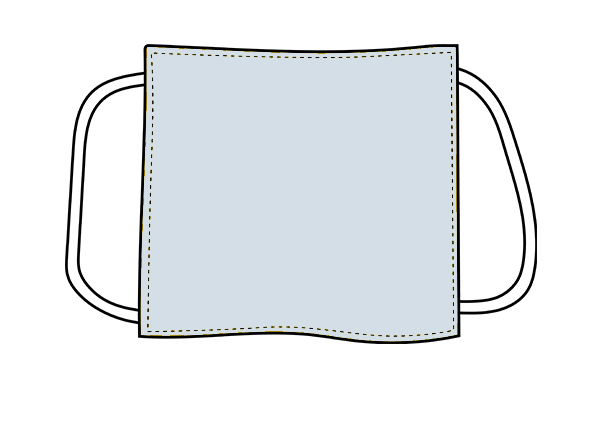
Step 8: gather your pleats
Make 3 evenly spaced folds along the right and left sides of your face covering. Pin these in place.
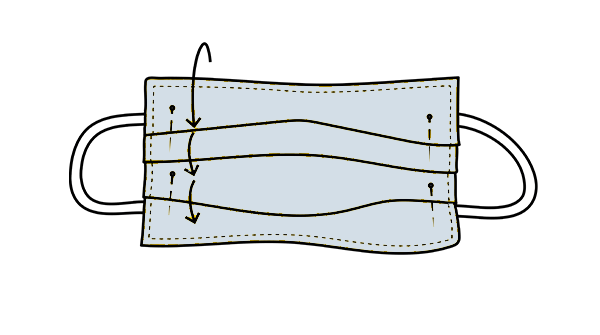
Step 9: stitch your pleats
To complete your face covering, stitch across the pleats, 3 mm away from your first line of stitching.
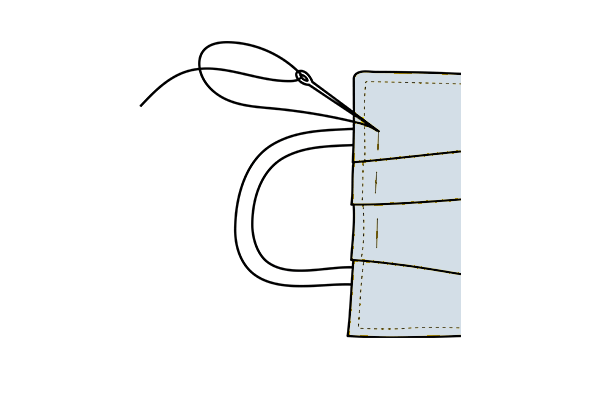
Step 10: wash your face mask
Wash your face mask in hot water and detergent, either by hand or in a washing machine. Dry your face covering completely before using it.
